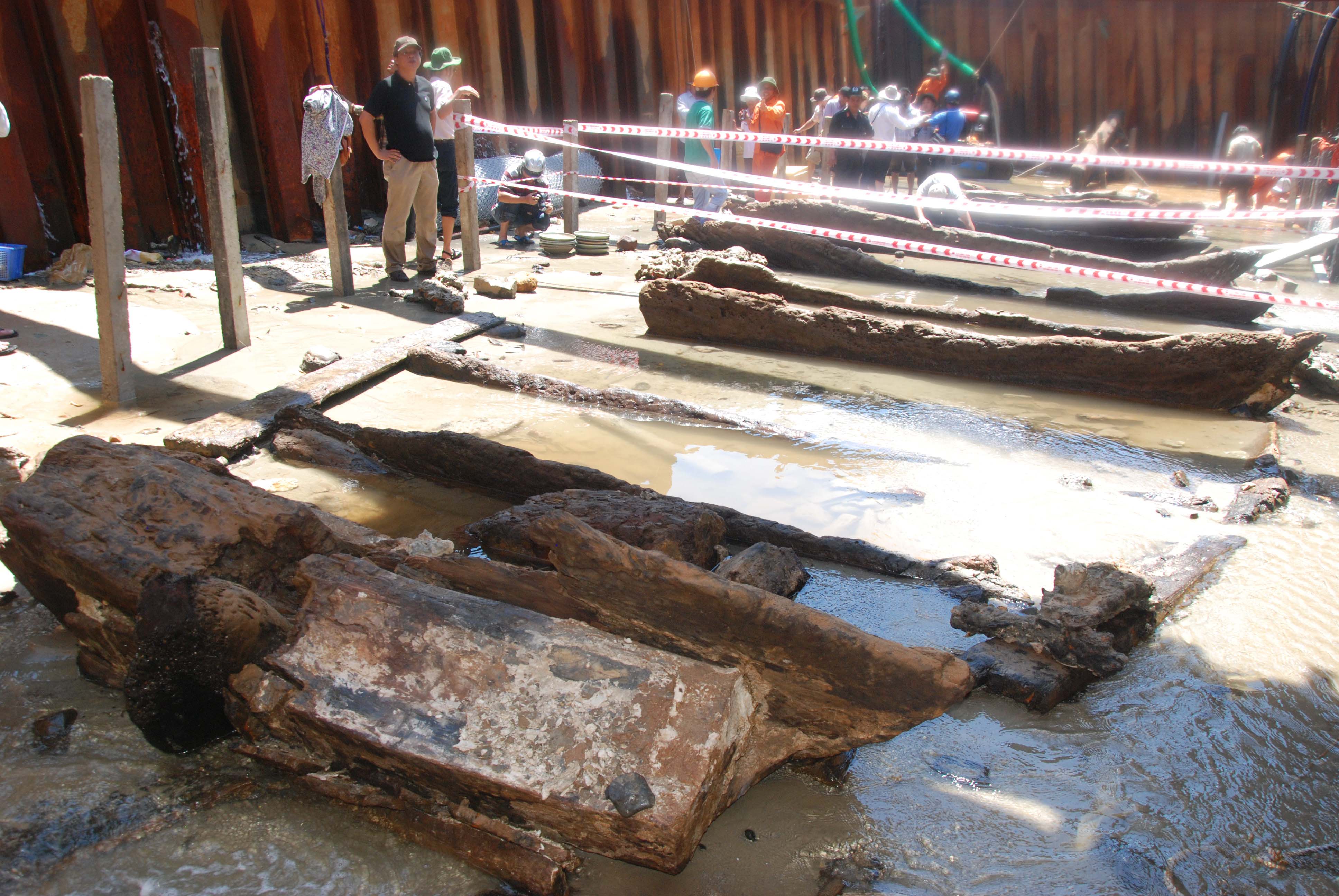As a child I, like many of my generation, watched movies about pirates roaming the seven seas and dreamed of one day finding my own ship full of treasure like the kids from the movie, The Goonies, who followed an old map and found the booty of pirate One-Eyed-Willie in a long-forgotten cave.
Neither did I have the chance of going on a treasure hunt, nor have any real aspirations of doing so, merely wishful thinking. However, it seems that maybe pirates (or more likely unfortunate traders) had been circling around the East Sea of Vietnam back in the day as a small village in Quang Ngai Province has now become a hotbed of sunken vessels, and with it we all hope some glittering treasure among the skulls and bones on board.
Apparently six ancient vessels have been found in recent times in the central waters in an area formerly known as Ceramic Road which is a former trade route linking the Orient and the Occident. Experts say three have been found in the village’s waters since 1998. It is estimated that dozens more carrying valuable ceramic pieces are lying in its waters.
One recent discovery saw fishermen find an old sunken boat near the shore. What happens? Thirty vessels appear, even though it is almost midnight, and the scramble for booty begins around 100 meters off Chau Thuan Bien Village of Binh Son District underwater. Apparently, there was more than 4,000 fully intact antiques recovered with some believed to be from the 13th century, maybe many more were damaged in the chaos.
The problem with treasure, though, is everyone wants a piece of the action. Recently, it was reported that professional excavators from Doan Anh Duong, the company in charge of excavating the antiques, ‘each bent down and picked up the pieces with great care’.
Others, though, were not so delicate. There is always the danger that there will be a frenzy for the treasure and according to a report, ‘many people used axes and crowbars to take the antiques smash and grab style only to break many pottery plates and bowls’.
One hunter Nguyen Van Thinh commented at the time: “There are many antiques in the boat, but people fought so much for them, smashing them… What a waste!”
Police were at one point considering issuing arrest warrants to locals who attacked policemen while trying to loot the apparent 700-year-old sunken ship of its priceless treasures.
Apparently, hundreds of fishermen threw rocks at authorities and overturned a police car in a scuffle with the authorities over who should keep the treasures with five policemen injured.
The fishermen claim that since they found the ship, they are entitled to keep the treasure and if the rule was finders-keepers, they would be entitled.
However, the law sees things a little differently. According to Decree 96/2009, dated October 30, 2009, regarding buried and sunken property which is discovered on the mainland, on islands and in the sea of Vietnam, the said antique items belong to the State.
Vietnamese laws also require finders to hand over the found objects to authorities for a cash reward of 15-30 percent of the value of a relic. A decent enough cut you would think for any would-be treasure hunter.
According to Dr. Doan Ngoc Khoi, vice head of the Quang Ngai museum, there is a high likelihood that these discovered vessels were merchant ships which came from the north and stopped by the area to seek shelter from storms before sinking with most of the pottery from China’s Ming dynasty (1368–1644) and later dynasties.
It maybe seemed like a good idea, sheltering that is, for the captains at the time but according to experts, although this area lies in a bay covered by a five kilometer arc of mountains, it is not a safe region because the arc catches violent seasonal monsoon winds blowing to the northeast. The arc often suffers from high offshore waves.
In addition, at both ends of the arc lies an expanse of reef that can sink ships at low tide. So the area was more like a trap created by nature which many failed to escape from.
Nguyen Dang Vu, director of Quang Ngai Department of Culture, Sports and Tourism, said the many discoveries not only enrich Vietnam’s antiques collections, but also help provide evidence of the silk and pottery route involving Asian and Western traders across the East Sea centuries ago.
Vu said archaeologists engaged in one of the recent salvage operations informed that some antiques came from outside the boat, which suggested that the waters have had many shipwrecks from different ages and countries, and with different kinds of cargos.
Vietnam has excavated four other ancient shipwrecks since the 1990s, in waters off Vung Tau and Kien Giang in the south, all after fishermen’s discoveries.
Seabed Exploration, a company that specializes in salvaging shipwrecks in Southeast Asia, estimates that Vietnamese waters have around 40 old ships, but the government has done little with the information.
Not surprisingly, now that Chau Thuan Bien is famous as the home of antiques collected from shipwrecks, shadowy figures have come out of the woodwork selling fake antiques which have been transported there to cheat ‘newcomers’ in the industry.
Some fake goods have even been buried in mud for years before people pretend to lift them out of the water ‘at the site of excavation’.
Experts believe Vietnam has barely ‘touched’ the surface on shipwreck antiques in its seabed, even though it has immense potential thanks to the 3,200km of coast facing the ancient Ceramic Road that linked East with West thousands of years ago.
I reckon that is easier said than done. It can be costly but it seems the bounty is lying there waiting to be discovered by treasure hunters who eye their life-changing fortune.
I don’t think that the finders-keepers ‘law’ will ever apply, though, when there is a lot of history and in particular wealth at stake.




















































